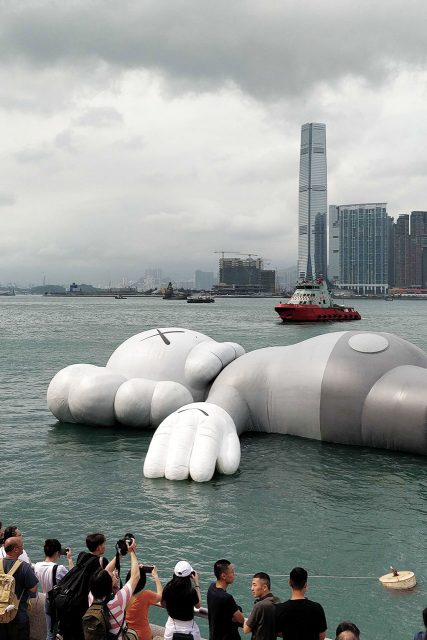“For me, art has always been about communication,” says Brian Donnelly, whom you’ll more likely know by his graffiti tag KAWS. His story as an artist begins not in the studio, but on the street where he could speak directly to passersby. In the mid-1990s, Donnelly’s cartoon-like figures emerged across New York where he studied at the School of Visual Arts, encircling Christy Turlington in Calvin Klein adverts and forming the basis of the recurring characters in his work that include CHUM (an appropriation of the Michelin Man), COMPANION (a figure who sometimes wears Mickey Mouse shorts and gloves) and the Kimpsons (a parody of The Simpsons).
With their instantly recognisable Xs for eyes, these characters play out in Donnelly’s graffiti drawings, paintings, smaller collectible toys, colossal sculptures and even furniture. In 2018, he worked with São Paulo-based design duo Campana Brothers to design a line of armchairs and sofas overlaid with KAWS’s soft toys that was unveiled at DesignMiami art fair and promptly snapped up by the likes of model Kylie Jenner and rapper Travis Scott.
Though often dismissed by critics, Donnelly is perhaps one of the most loved contemporary artists. Just ask his 3.2m Instagram followers or the anonymous bidder who paid $14.8m for The KAWS Album at a Sotheby’s auction in 2019 (Donnelly himself didn’t make anything from the sale due to resale royalty restrictions). What’s more, his bold and playful gestures have proven catnip for the fashion world.
Interior spread from UNTITLED (Blackbook), circa 1993
Photo: Brad Bridgers Photography
He has collaborated with the likes of A Bathing Ape, Supreme and Nike; for his debut collection at Dior Men, Kim Jones partnered with KAWS and had a 22ft-tall sculpture of his signature BFF character installed on the runway. And for her AW21 Comme des Garçons shirt collection, Rei Kawakubo drizzled shirts, coats and bags in a CDG print designed from Donnelly’s drawings. “I always liked the way people can have an intimate connection with your work through fashion,” he says. “It’s one thing to see it on a wall and another to have it a print on clothing.”
Dior Homme Menswear Spring/Summer 2019
Photo: Bertrand Rindoff Petroff via Getty Images
This month sees the opening of KAWS: WHAT PARTY at the Brooklyn Museum. Billed as the artist’s first major New York survey, it chronicles Donnelly’s 25-year career and showcases his recent ventures into the medium of augmented reality — enabling people from all over the world to connect with his work via the Acute Art app. Ahead of the opening, Donnelly gave Vogue a virtual tour of the exhibition, telling his story through selected pieces from the show.
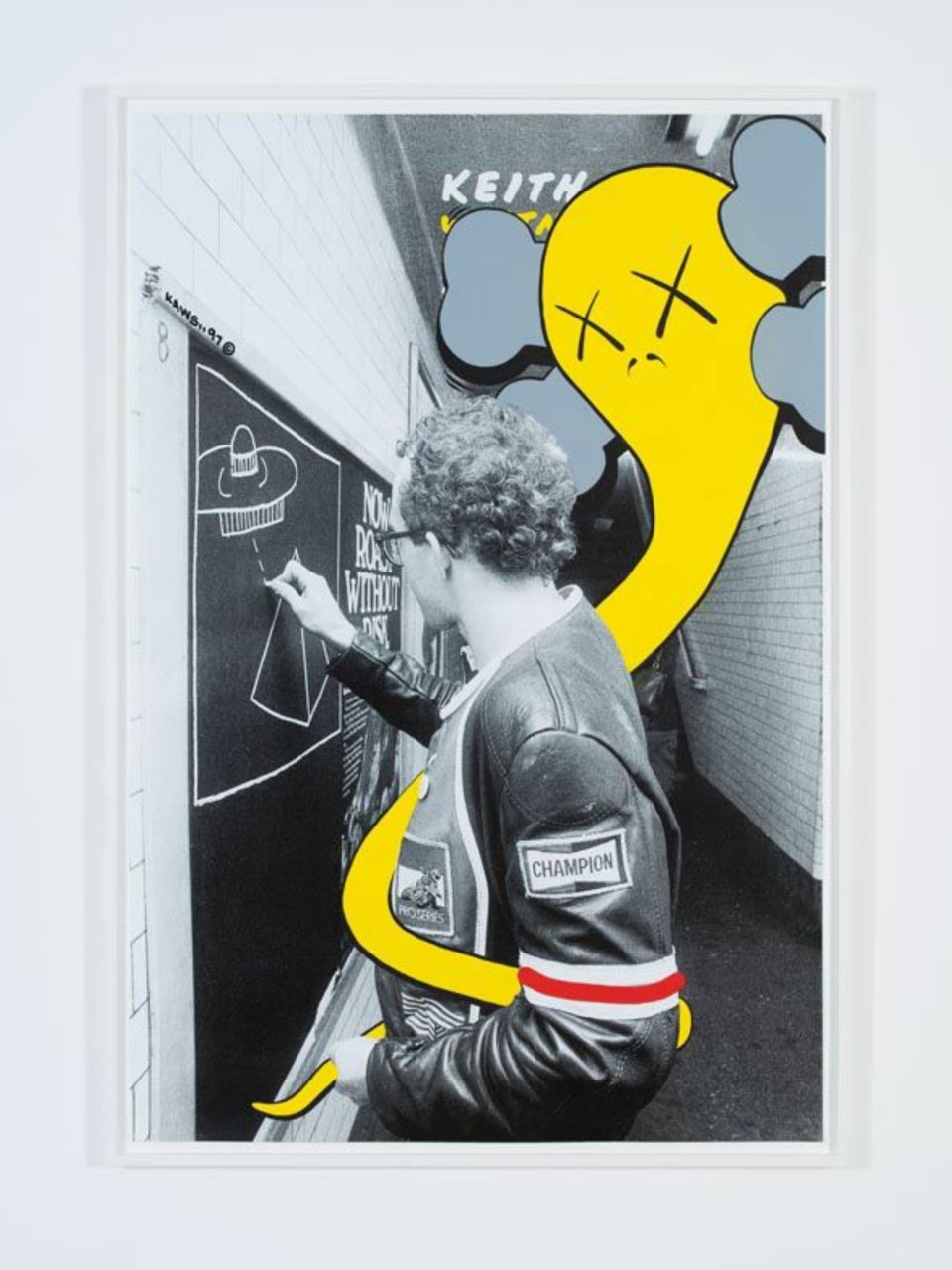
KAWS, UNTITLED (HARING), 1997. Acrylic on existing advertising poster, 68 × 48 in.
Photo: Farzad Owrang
UNTITLED (HARING), 1997
“My early heroes were people such as Lee Quiñones, Futura 2000 and Blade — graffiti artists from the late 1970s and early 1980s — you’d see them take a name and create a presence for themselves. I don’t consider Keith Haring to be a graffiti artist, but he fell on my radar because of his work on the street and his association with artists including DONDI. In my neighbourhood, there was a bus shelter ad for Haring’s show at the Whitney [Museum of American Art] so it was fair game. I loved his democratic approach to making art and how he made it accessible through [his store] the Pop Shop, so painting over his output felt natural.”
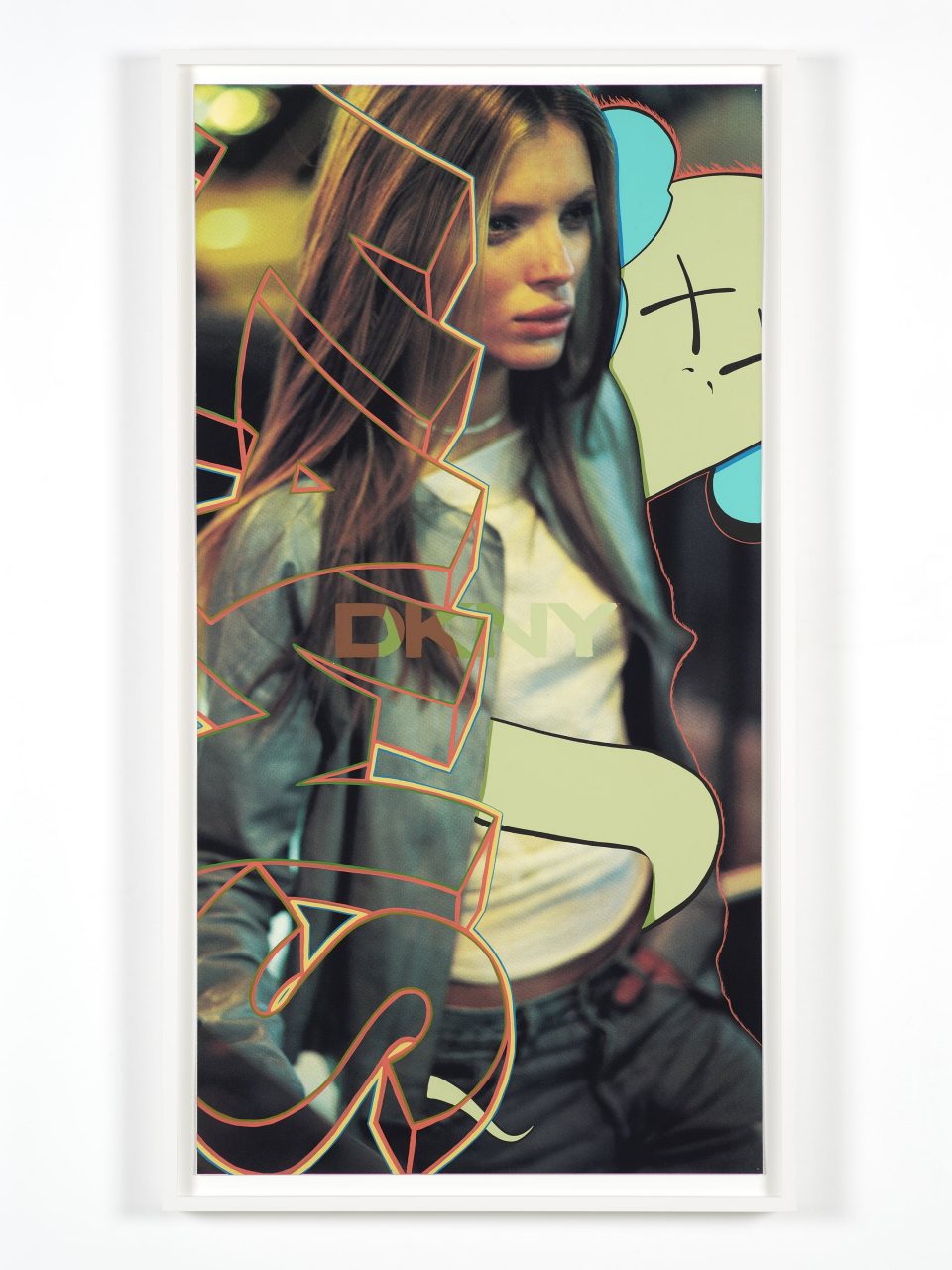
KAWS, UNTITLED (DKNY), 1999. Acrylic on existing advertising poster, 50 x 26 in.
Photo: Farzad Owrang
UNTITLED (DKNY), 1999
“I started painting over advertisements in 1993. I was living with my parents in Jersey City [New Jersey] at the time and the billboards were of Marlboro and Captain Morgan. When I moved to New York in 1996, it was more fashion, like DKNY and Calvin Klein. I’d break into bus shelters and phone booths in my neighbourhood, paint over the ads and then put them back in their place. I wasn’t looking to get into fashion, I just wanted to get my work out into the world.”
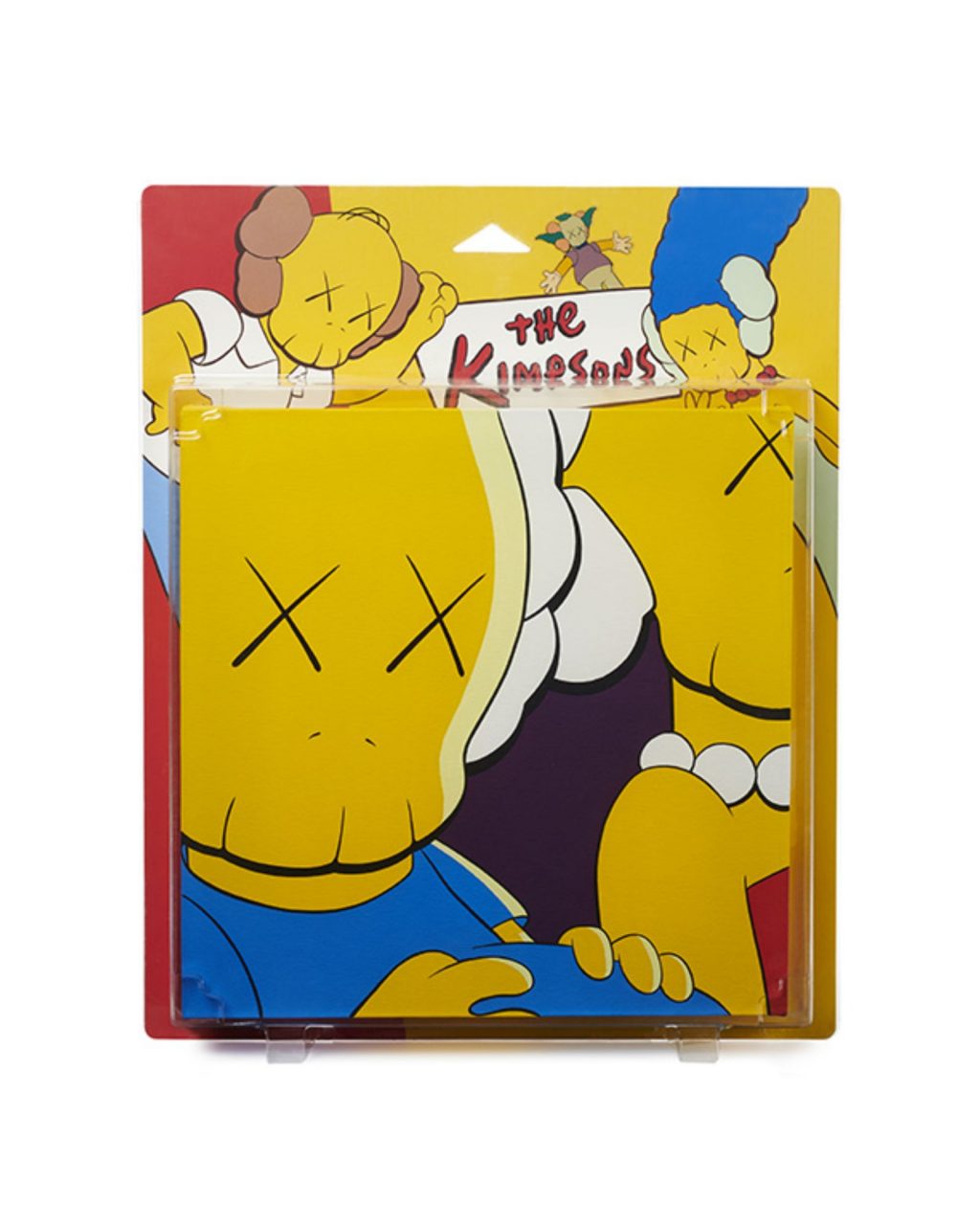
KAWS, UNTITLED (KIMPSONS), PACKAGE PAINTING SERIES, 2000–02. Acrylic on canvas in blister package with printed card, 19 × 23 1/2 in.
Photo: Brad Bridgers
UNTITLED (KIMPSONS), PACKAGE PAINTING SERIES, 2001
“This was my go at tying my different worlds together — a painting that operates as a sculptural object, which plays into the tradition of toys. Cartoons exist across different cultures and countries; kids my age in Mexico were growing up on the same Smurfs [TV show] that I grew up with. A lot of my paintings are flat, similar to cartoons. I like the feeling this work creates when you’re in front of it, especially at the scale I work at.”
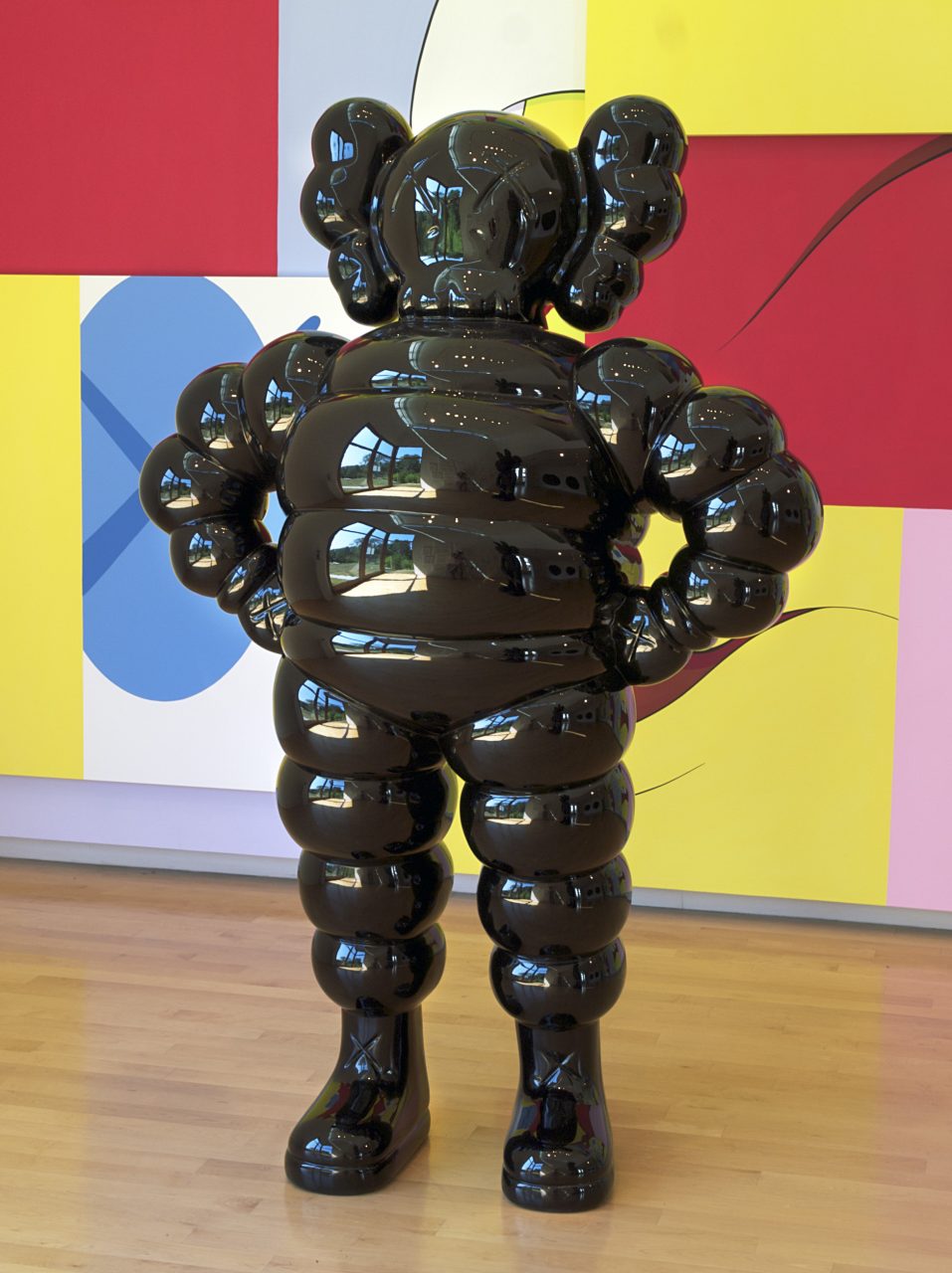
KAWS, CHUM, 2008. Fiberglass, paint, 84 x 56 x 38 in.
Photo: Chad Kleitsch, courtesy The Aldrich Contemporary Art Museum
CHUM, 2008
“I originally made the CHUM character as a toy in 2002. I was thinking about how Michelin was one of the first companies to depart from the product and use a character as a representative. I’ve always been interested in how characters — whether in animation or advertising — become identifiable and relatable for people. They have a lifespan that goes well beyond an actor or personality representing a brand.”
KAWS, COMPANION, 2010. Fiberglass, paint, 96 × 48 × 36 in.
COMPANION, 2010
“COMPANION was the first toy I designed in 1999. Twenty years later, never would I have imagined I’d still be using COMPANION in my work, but I keep finding things I want to say through it. It still feels new to me.”
KAWS, UNTITLED (KAWS PINOCCHIO), 2010. Ink on paper, 11 x 8.5 in.
Photo: Peter Harholdt
UNTITLED (KAWS PINOCCHIO), 2010
“There are pen drawings [throughout the exhibition] of pieces that I made for different projects. This one of Pinocchio was for a toy I made with Disney in 2010 and sold through my Tokyo store OriginalFake [which was open from 2006 to 2013]. Having a permanent shop became a great outlet for me [without having gallery representation] to work with companies such as Disney, Warner Bros and Burton.”
KAWS, AT THIS TIME, 2013. Wood, 103 15/16 × 44 1/16 × 39 3/8 in.
Photo: Todora Photography, LLC
AT THIS TIME, 2013
“In 2005, I started making small wooden editions with a Japanese company called Karimoku. I’ve gone on to create large scale pieces in wood that are more than 10m tall. When you see a piece on that scale, it’s overwhelming, but at the same time it’s wood and outdoors so there’s a vulnerability to it, and like a boat, it needs constant maintenance. I like to find the best places to produce my work; the wooden sculptures are cut near Amsterdam and then shipped to Maastricht [in the Netherlands] to be hand-finished.
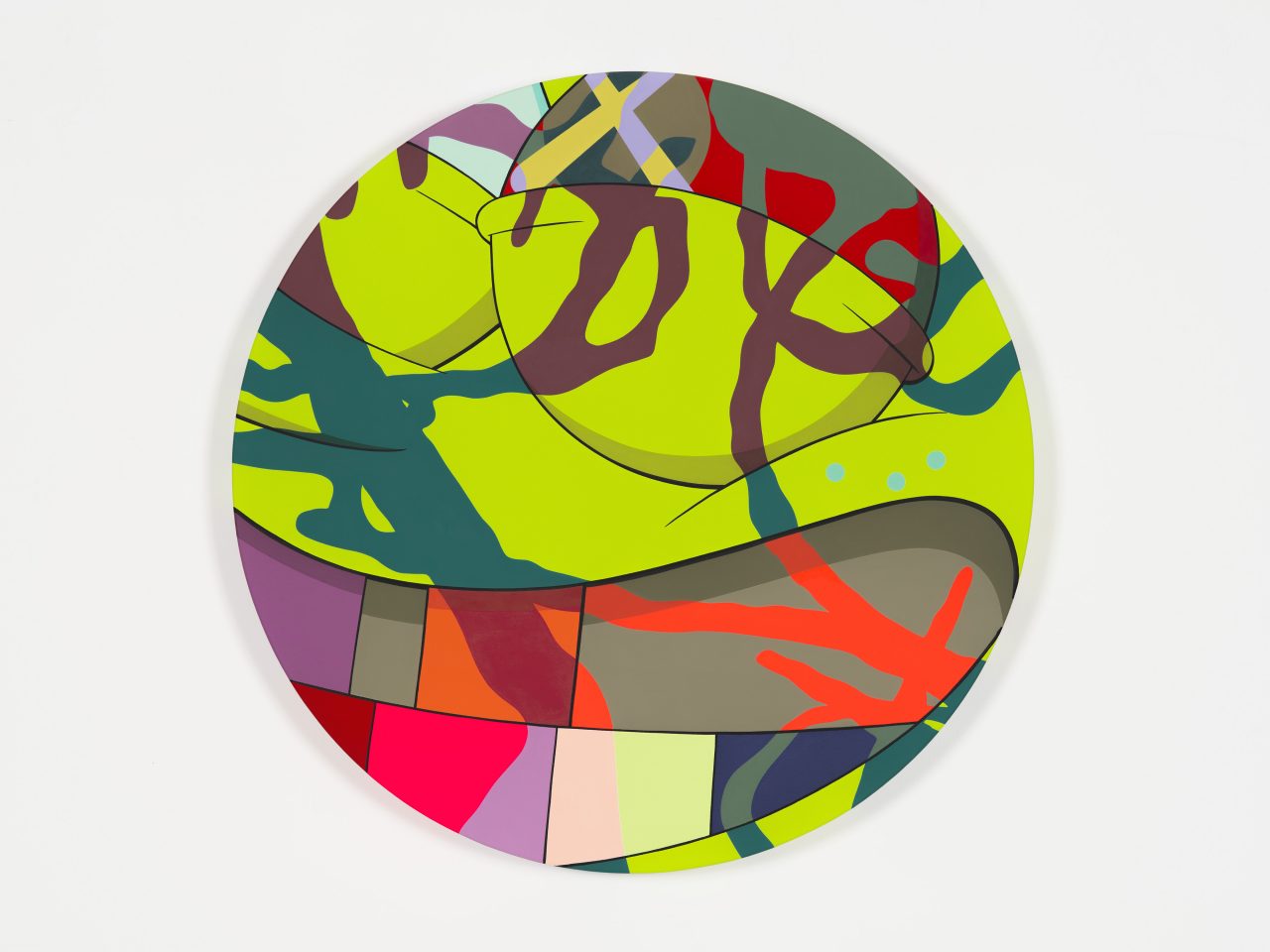
KAWS, THE NEWS, 2017. Acrylic on canvas, in 9 parts, each 20 inches in diameter.
Photo: Farzad Owrang
THE NEWS, 2017
“This series of nine paintings from 2017 represented the tension that I felt at that moment. They’re colourful and pleasing to look at, but there’s also this anxiety built into them. Has that anxiety shifted? It has and it hasn’t. I’ve always thrived off anxiety and doubt.”

KAWS, HOLIDAY, 2019. Inflatable, approximately 120 feet long. Chiang Kai-shek Memorial Hall, Taipei.
Photo: @songmatin, courtesy AllRightsReserved, Ltd.
KAWS: HOLIDAY, 2019
“There’s something nice about a permanent sculpture that you can visit every time you’re in town and another quality to [ephemeral] work such as KAWS: HOLIDAY. This [40m-long inflatable COMPANION figure] was on display at the base of Mount Fuji, Japan, for six days after touring Hong Kong, Taipei and Korea. People travelled to see the work and camp there. This is what led me to get interested in AR and play with the ‘what is real?’ question.”
KAWS, URGE (KUB2), 2020. Acrylic on canvas, 86 x 72 in.
Photo: Farzad Owrang
URGE (KUB2), 2020
“In March 2020, my wife and I had Covid-19. I was in bed for three weeks. There was all this uncertainty and news about not touching your face, not touching anything. I started doing drawings of CHUM with hands all over his face — touching and contaminating. It’s meant to be humorous but at the same time, it’s very stressful. As soon as I got out [of isolation], I turned the drawings into a series of 10 paintings, which is hung as a grid in the exhibition.”
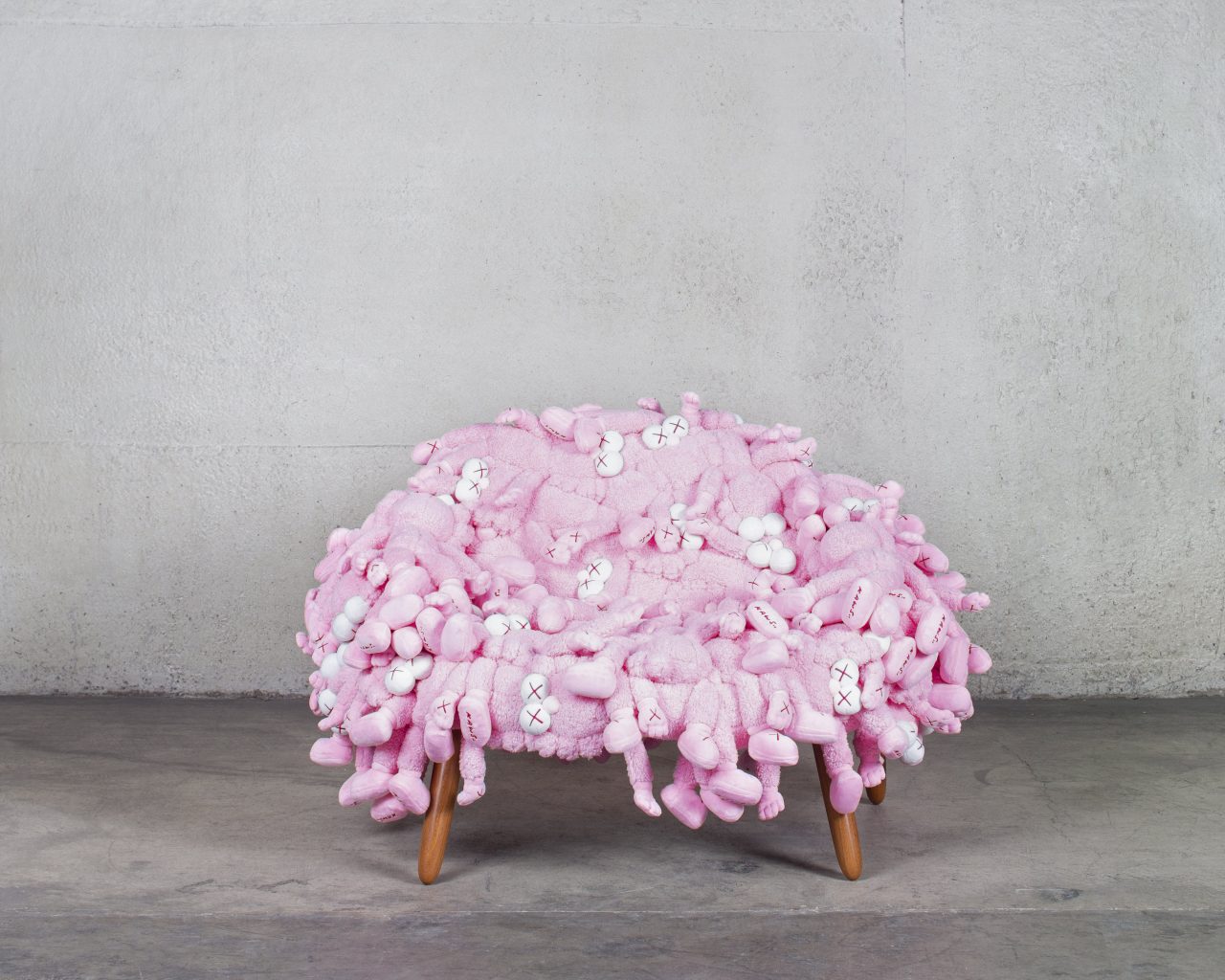
KAWS and Estudio Campana, KAWS CHAIR PINK, 2018. Plush toys, stainless steel, Cumaru wood, 36 x 50 x 42 in.
Photo: Daniel Kukla
KAWS: WHAT PARTY is on view at the Brooklyn Museum from 26 February to 5 September 2021 and is curated by Eugenie Tsai, the John and Barbara Vogelstein senior curator. A fully illustrated catalogue co-published with Phaidon, which features exclusive brand-new content with five different covers, will be available from 23 June
Read Next
Ahead of Art Basel, KAWS Launches Floating Sculpture in Victoria Harbour
Editor
Liam FreemanCredit
Lead image: KAWS, WHAT PARTY, 2020, photographed by Michael Biondo







